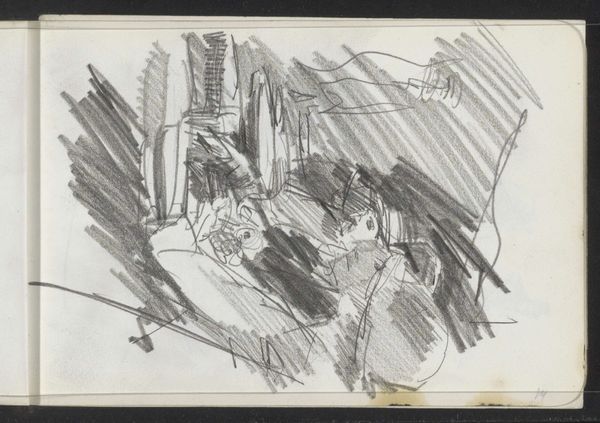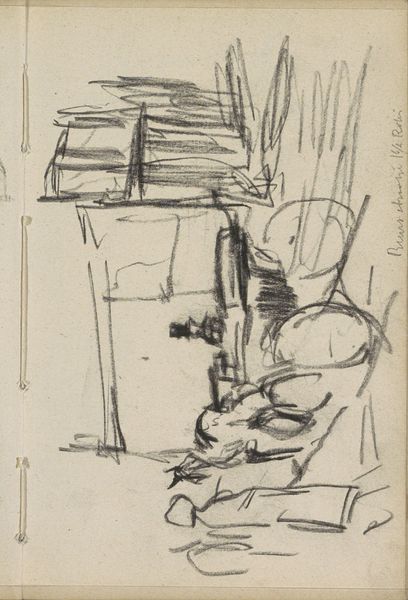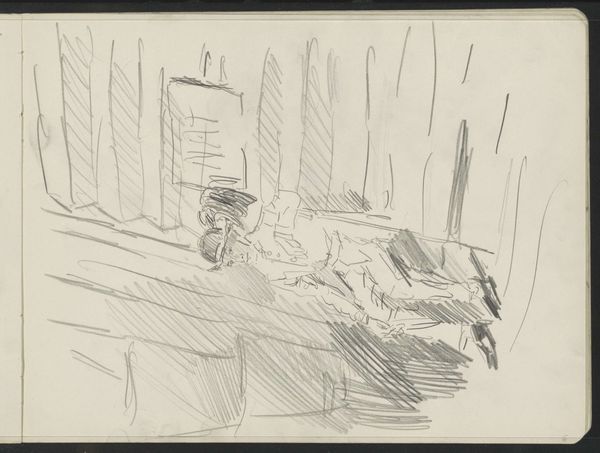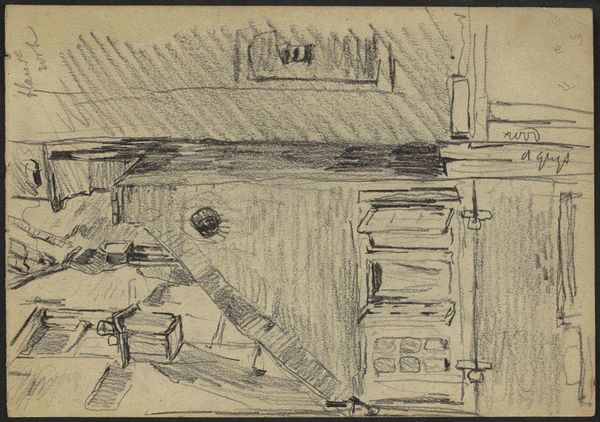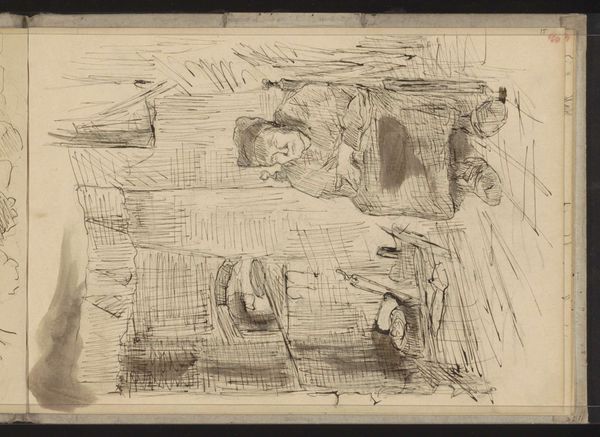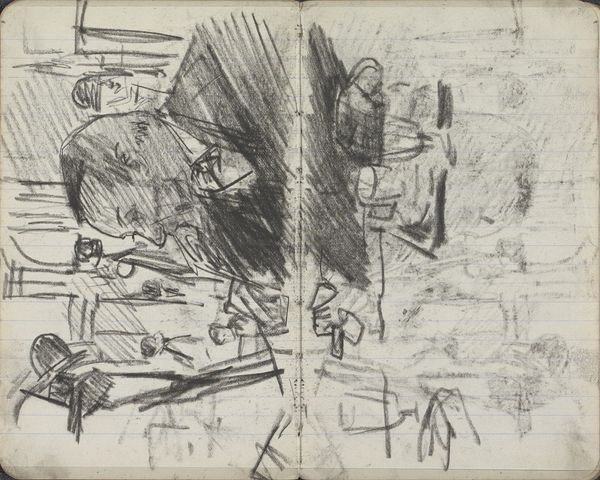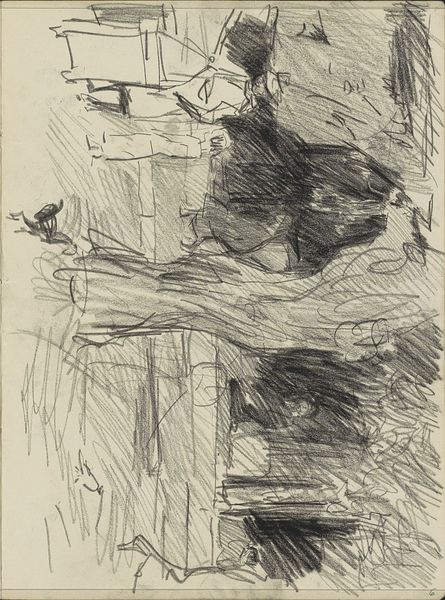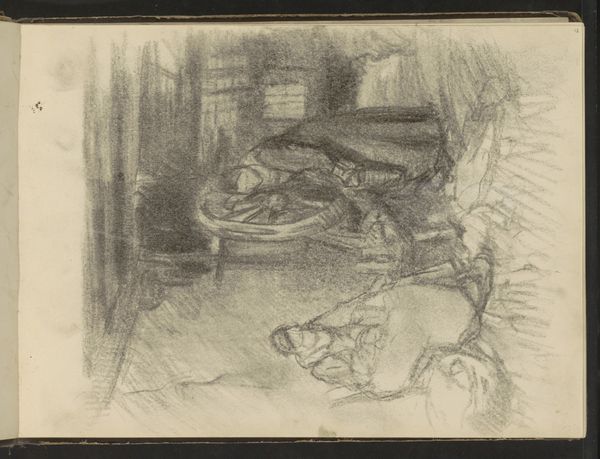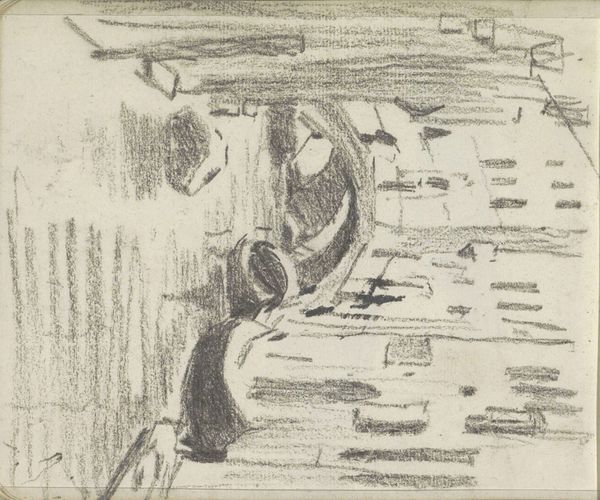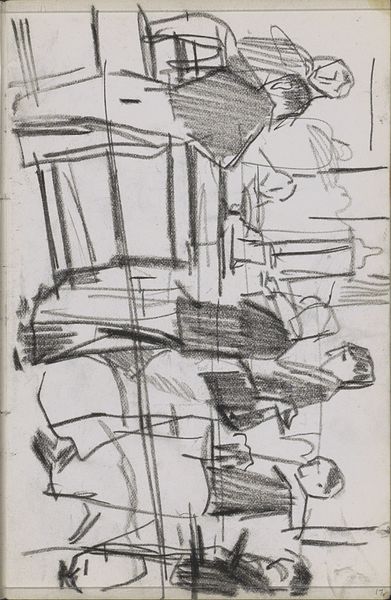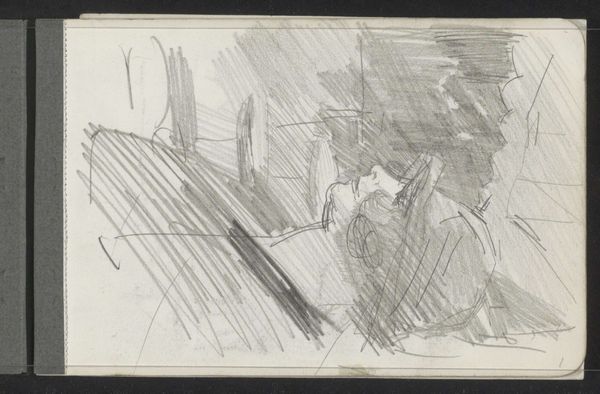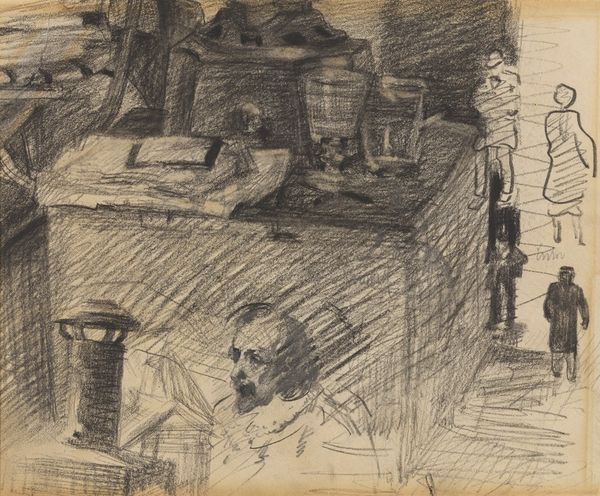
Copyright: Rijks Museum: Open Domain
Willem Witsen made this drawing, Smidse met vuur (Jan), with graphite. It depicts a blacksmith at work in what appears to be a traditional smithy. This artwork is particularly interesting when considering the Netherlands' cultural and industrial climate at the time. In the late 19th and early 20th centuries, the Netherlands was undergoing significant industrialization, but also held onto traditions. Witsen's choice to depict a blacksmith, a traditional craftsman, is a nod to the past. The sketchy, almost unfinished quality of the drawing adds to this sense of transition, as if the old ways are fading into something new. The visual codes are interesting too; the dark, enclosed space of the smithy could be interpreted as a symbol of the working class. To fully understand this drawing, one could delve into archives to learn more about the social history of labor in the Netherlands during Witsen's time, exploring how artists engaged with themes of industry, labor, and social change. This way, we can understand how art is deeply intertwined with its social and institutional context.
Comments
No comments
Be the first to comment and join the conversation on the ultimate creative platform.
